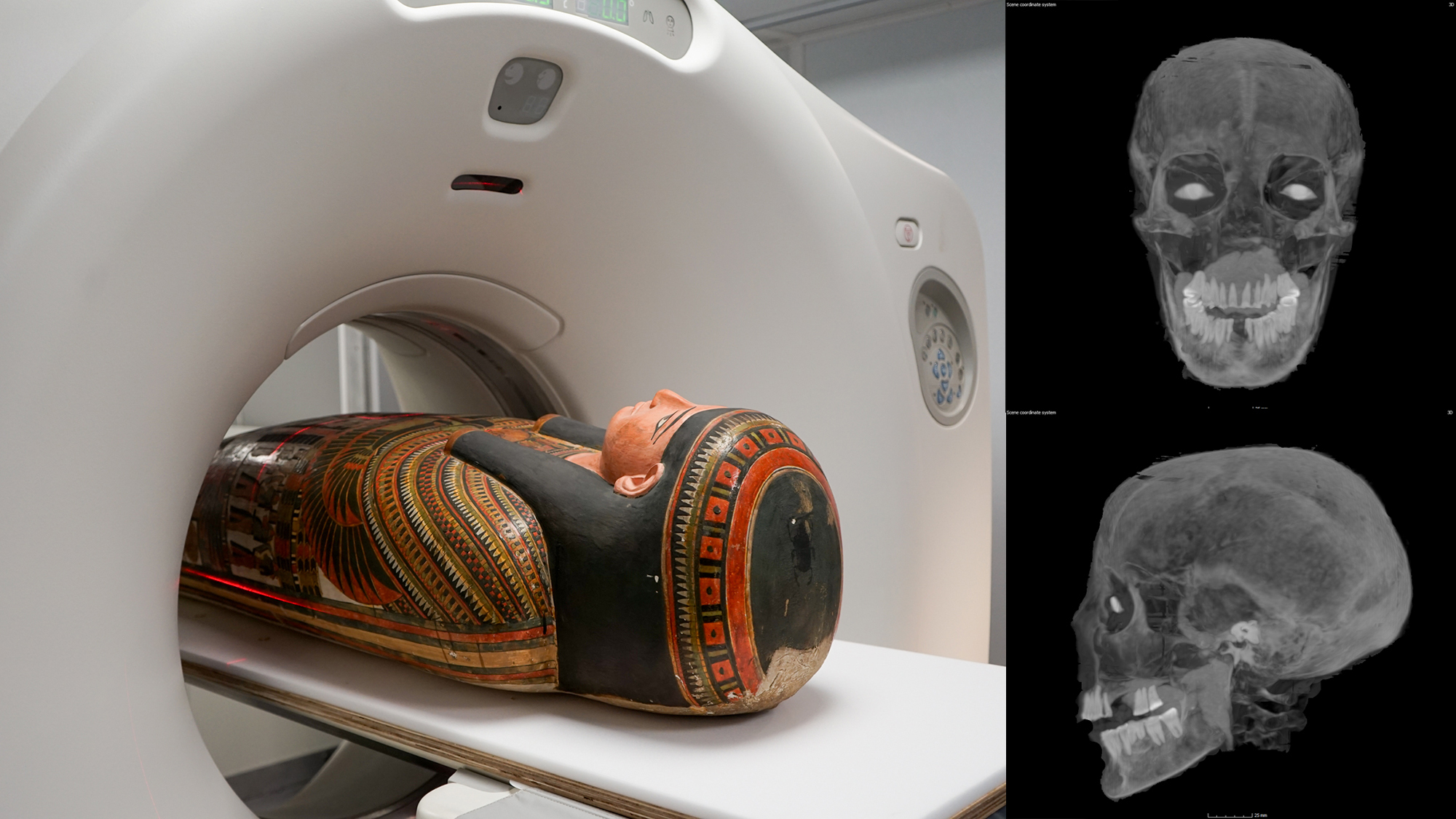Chicago’s Field Museum is home to over a dozen ancient Egyptian mummies but one in particular has perplexed researchers for years. Now, the mystery of Lady Chenet-aa’s burial procedure appears to be solved with the use of a CT scanner.
Lady Chenet-aa lived roughly 3,000 years ago amid the 22nd Dynasty during Egypt’s Third Intermediate Period. Soon after her death, one of the ways funerary experts prepared her for the afterlife was by constructing a cartonnage—a paper mache-like box housing a deceased person’s body. In Chenet-aa’s case, however, there isn’t any hint of a visible seam, leaving Egyptologists to wonder for years exactly how embalmers placed her inside the casing. According to an October 24 announcement from the Field Museum, a mobile CT scanner helped to finally explain the strategy behind Chenet-aa’s “locked-mummy” cartonnage, as well as new physical information about her at her time of death.

Computed tomography, or CT, scanning creates 3D renderings of a subject by digitally stacking thousands of X-ray scans on top of one another. Over four days, researchers recently transported 26 mummies (including Chenet-aa) to a mobile machine parked outside the Field Museum. The resulting imagery allowed experts to analyze the cartonnage and its contents at an unprecedented level of detail—leading them to figure out how funerary attendants placed Chenet-aa into what appeared to be seamless casing in the first place.
“You can start to see that there’s a seam going down the back and some lacing,” JP Brown, the museum’s senior conservator of anthropology, said in a statement.

The CT imaging also revealed new details about Chenet-aa’s health during her final days. According to researchers, the aristocrat died either in her late-30’s or early 40’s, although the cause of death wasn’t specified. Her teeth weren’t in the best of shape—many were missing at the time of death, while the remaining teeth showed “significant wear,” according to the museum’s announcement. Experts attribute this to a diet that often included “stray grains of sand” in food that were harsh on enamel.

Images of the mummy’s skull include bright objects in both its eye sockets, despite a clear lack of the organs. These are artificial eyes of an unknown material meant to allow Chenet-aa sight in the afterlife.
[Related: ‘Screaming woman’ may solve a 3,500-year-old mummy mystery.]
“The ancient Egyptian view of the afterlife is similar to our ideas about retirement savings. It’s something you prepare for, put money aside for all the way through your life, and hope you’ve got enough at the end to really enjoy yourself,” Brown explained. “The additions are very literal. If you want eyes, then there needs to be physical eyes, or at least some physical allusion to eyes.”
These are just the first of many potential insights into some of the Field Museum’s oldest and most delicate remains. Over the next year, researchers hope to continue examining the thousands of CT scans for more clues about death–and life–in ancient Egypt.

